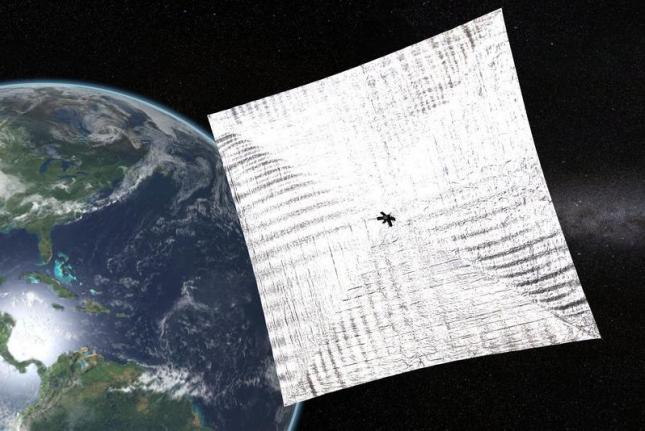LightSail Spreads its Sails

PASADENA, Calif., June 8 (UPI) — After a few setbacks and several anxious periods of radio silence, the Planetary Society’s solar sailing space probe has deployed its giant, featherlight sails.
The unfurled sails mark an initial success for what is to be a two-part experiment. Next year, Bill Nye’s organization will launch another sail-powered CubeSat — this one set for a lengthier cruise.
The current LightSail satellite offers further proof that the kinetic energy of sun’s streaming particles can be harnessed for cheap and efficient space travel. But the probe won’t be sailing for long. Atmospheric drag will soon pull the small, toaster-sized cube and its expansive, kite-like Mylar sails down towards Earth where the entire operation will be burned up by atmospheric friction.
LightSat has failed to respond to ground controllers twice since it was lunched some two weeks ago, going silent for several days. But the probe finally responded to engineers’ sail-deployment commands on Sunday afternoon.
“All indications are that the solar sail deployment was proceeding nominally,” mission manager David Spencer wrote to followers in an email update.
An excited Bill Nye took to Twitter to confirm the success: “Motor is running! Sail is Deploying!!! 39 Years after Prof. Sagan spoke of it!”
In the late 1970s, famed cosmologist Carl Sagan theorized that solar particles could propel a sail-powered spacecraft, eliminating the need for heavy fuel loads. Previous experiments by NASA and Japanese engineers have demonstrated the potential of solar sailing, but Nye and his colleagues hope their work can improve the technology (and make it more affordable).
Despite the setbacks — or more accurately because of them — LightSail’s deployment actually happened sooner than expected. Originally, the sails were to be hoisted 28 days after the CubeSat was released into space, but the software malfunctions engendered a sense of urgency and engineers decided to green-light the sails at first opportunity.
The Planetary Society hopes to soon have further evidence of the unfurled sails catching solar particles — including pictures. Stay tuned.
In the meantime, the group hasn’t stopped raising funds for next years part-two experiment. Nye’s team has already raised more than $800,000 on Kickstarter — four times their goal.






